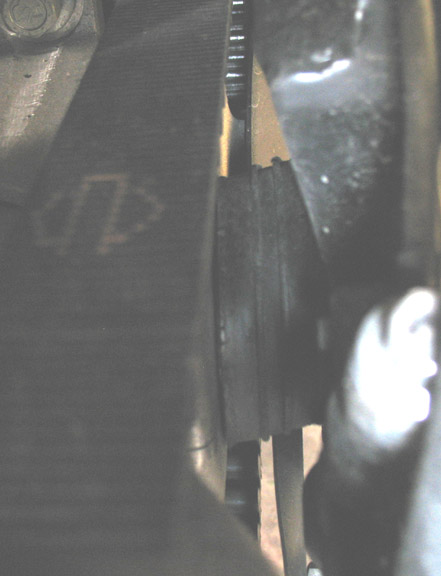| Author | Message | ||
Jreichner |
I have been reading up on a few things here regarding isolators but I would like to know more. I have noticed a number of topics relating to the replacement of these isolators. I have a 99 S3T and I am the orig. owner. I am not experiencing any issues or at least not that I am aware of at the moment. The reason why I am asking these questions is because the bike is down right now and I was wondering if I should replace them now while I have the opportunity or should I use the old addage(If it ain't broke dont fix it). Can someone also educate me a bit more about the use of the isolators? Thanks in advance for any additional information you may be able to provide. | ||
Bomber |
J -- the isolators are rubber with metal washers imbedded in em -- they are a very specific density, and age over time (not just milage) if you live near a major metropolitan area, I'd bet they've hardeddue to exposure to the crap in the atmosphere -- unless they fail catostrophically (rare), the failure mode is a slow increase in vibrations felt -- so slow that you may not notice over time -- eventually, they'll fall apart so badly as to no longer positively locate the engine/swingarm in the frame they are relatively inexpensive -- if the bike's down anywho, given the 7 or 8 year age of the poor dears, I'd replace em now while it's easy (and not July) | ||
Jimidan |
The original isolators definitely have a serviceable life span, and it sounds like you have been fortunate. It would be cheap insurance to change them out now while the bike is down. However, the factory replacements for the front isolator appears to be inferior in design to the one you now have in your bike...so you may would be worse off to replace it with a new one. Might I suggest that you not use the factory front isolator when you do the replacement as they obviously have very soft rubber in them, which have been known to break down very quickly. There is a thread on this on somewhere on this site that would be worth reading for you. I have had one break in less than 500 miles. The service manager at my dealership has told me that they have had numerous problems with these "new" style isolators breaking in both Buells and HD's FXRs, causing a hardship on them to have to replace them under warranty. In a way, we are lucky that the tube framed Buells share this isolator with the FXR's, so that our supply of them will be assured into the future. I have purchased my latest isolators (which have the apparent density of the old style like you have now) from Jireh Cycles, 877-681-0448 toll free, part number 5-101, listed for FXR 1982 and 1983, OEM 16207-79B, and the best part is that they are only $17.95. I hope this helps. jimidan | ||
Buellkowski |
Will those in the know please take a look at this isolator? I've been experiencing some rear-end looseness and wonder if these old-style isolators need replacement. Are they supposed to exhibit this amount of shear at rest?  | ||
Blake |
The rear isolators are actually naturally shaped in a skewed form exactly as depicted by your photo. A new rear isolator held in your hand will have the same form appearing as though it has endured some severe shear induced deformation. But it is the way they are built. Also note that the apparent deformation is opposite of what the loading on the isolator would tend to create. That isolator looks fine to me. A failed isolator will exhibit unmistakable tearing in the rubber. |